How one Vancouver resident replaced his lawn and built an ecosystem
Stephane Laroye built a meadow for the bees. Turns out, he and his neighbours might be enjoying it even more.
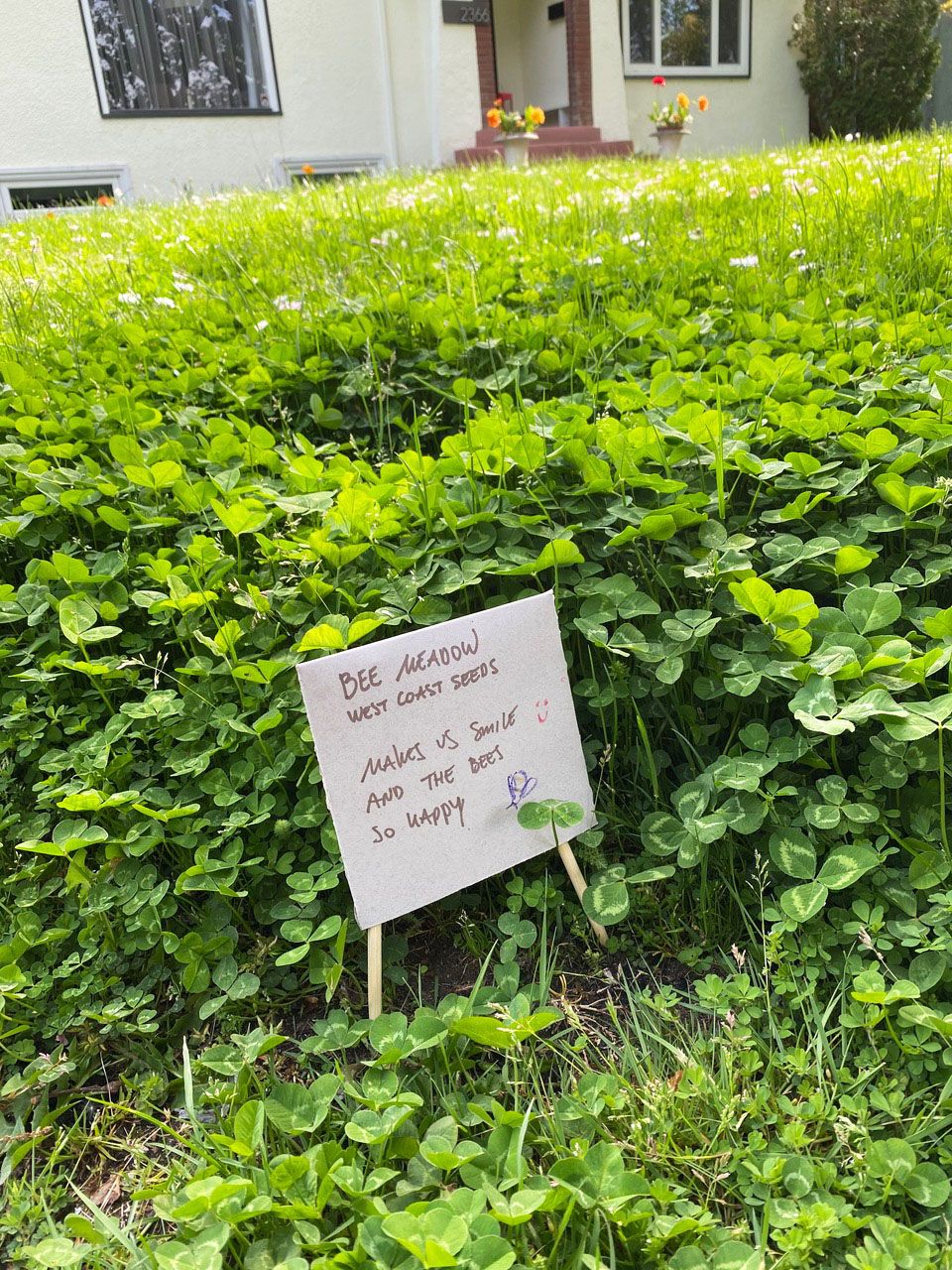
From a distance, Stephane Laroye’s front yard on the west side of Vancouver, Canada, is pretty similar to those around it: a flat green expanse leading up to a modest yet comfortable post-war home. But get closer, and the difference is striking. Rather than the typical field of grass, this yard hosts a mix of clover and low-growing wildflowers that was designed as an unobtrusive yet ecologically superior alternative to the traditional lawn.
Laroye, of course, isn’t the only one replacing his lawn with a variety of plants. He’s part of a global movement that includes popular programs such as the UK’s No Mow May and Homegrown National Park from American ecologist and entomologist Douglas Tallamy, who calls lawns “ecological dead zones.” (In his books, Tallamy advocates for Americans to turn half their lawns – which adds up to some 20 million acres of land – into gardens featuring native plants and trees that can provide habitat for insects and other wildlife.)
Here, Laroye chats about how his project began, what it took to replace his lawn and the rewards he and his family have gained from the change.
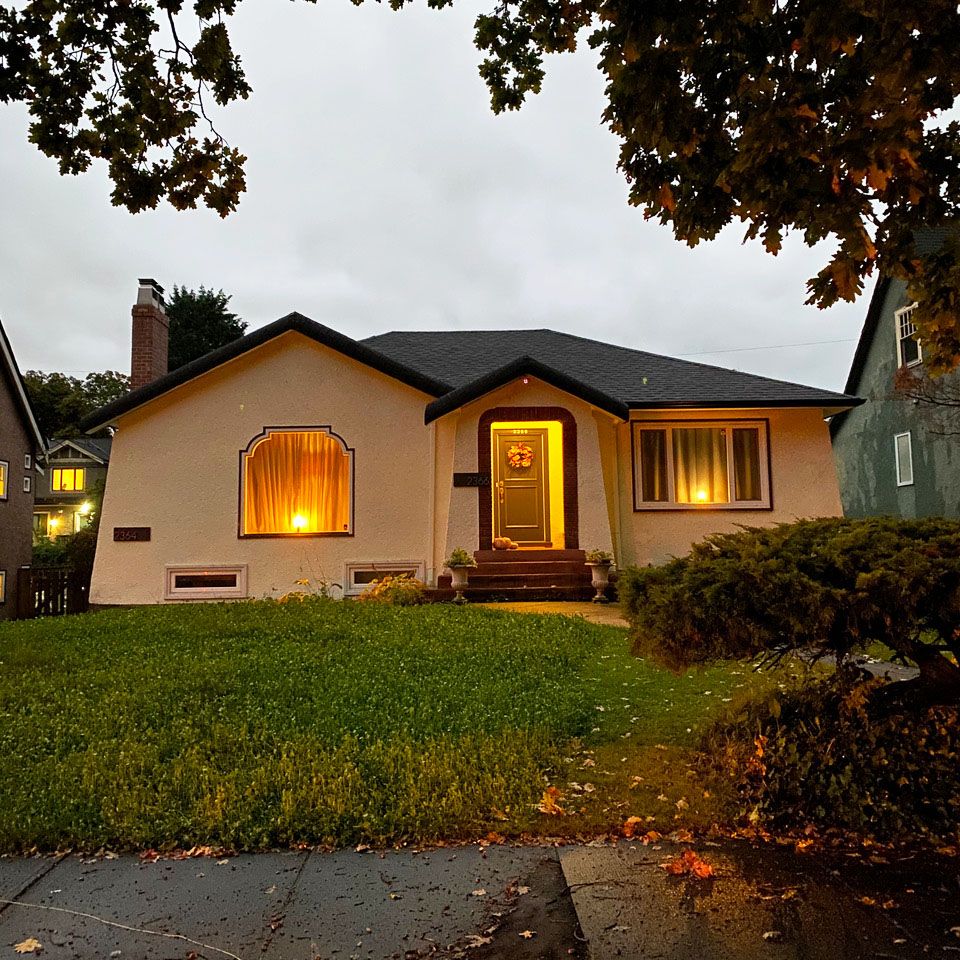
“A little over 10 years ago, there was a program with the City of Vancouver and SFU [Simon Fraser University]. A researcher wanted to reintroduce mason bees to Vancouver, and they were giving away bee hotels and a little package of mason bees. You had to attend a seminar to learn about the bees. We had an apple tree and some pear trees in our backyard and our neighbours had cherry trees. We thought, this will contribute to the health of these trees and maybe get us more fruit.
Every fall, we open up the little plastic trays and we very carefully clean out the cocoons. We give them a bath in very mild bleach and store them in the fridge all winter long, so they're nicely protected. And in the spring, we put them back into the bee hotel. [Editor’s note: For more on this process, the David Suzuki Foundation has an informative article on how to care for mason bees.]
I started with eight mason bees, and I had well over 30 the first year. So we started to share with other people. I gave away over 20 of my bees and we created a small, kind of geeky community of mason bee enthusiasts. I began sharing with people at work, through colleagues, just anybody who would want to have some mason bees. Our neighbours noticed a huge change in the number of fruit they had, as well. All the fruit trees seemed to be thriving.
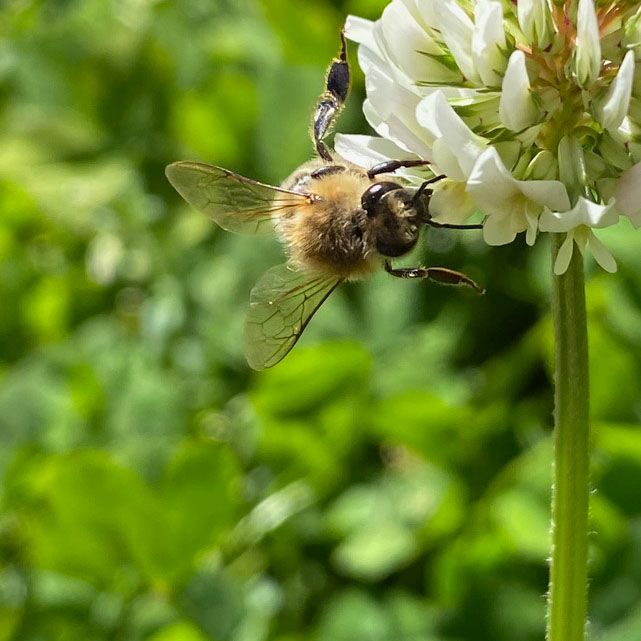
After about four to five years, we suddenly noticed a huge reduction in the number of bees. When I would open up those trays, instead of 30 or 35 bees I had 10. The following year, I had three. The following year, I had zero. It was a crash. I was really upset, because there was obviously something going on. There was an accusation that it was a product that people were applying to their lawns to kill the chafer beetle, which here in Vancouver was taking quite a toll on pristine lawns. It shook me up a bit and made me realize we needed to do a lot more for the bees to survive in the urban environment.
So I took advantage of another program the city had to support bees and butterflies, which was to receive free plants for your garden. We got three different plants that we wouldn't normally plant. Sure enough, the mason bees started to come back a little bit, but every year I seemed to lose one-third to one-half of the bees. I felt like I still needed to do more.
In the meantime, I was getting the chafer beetle myself on the front lawn. I've always mowed my lawn with a push mower and I couldn't even mow my lawn because it was so patchy in the front. It looked really awful. You get pretty self-conscious where everyone’s got these beautiful manicured lawns and here I am with this balding, old, crusty lawn.
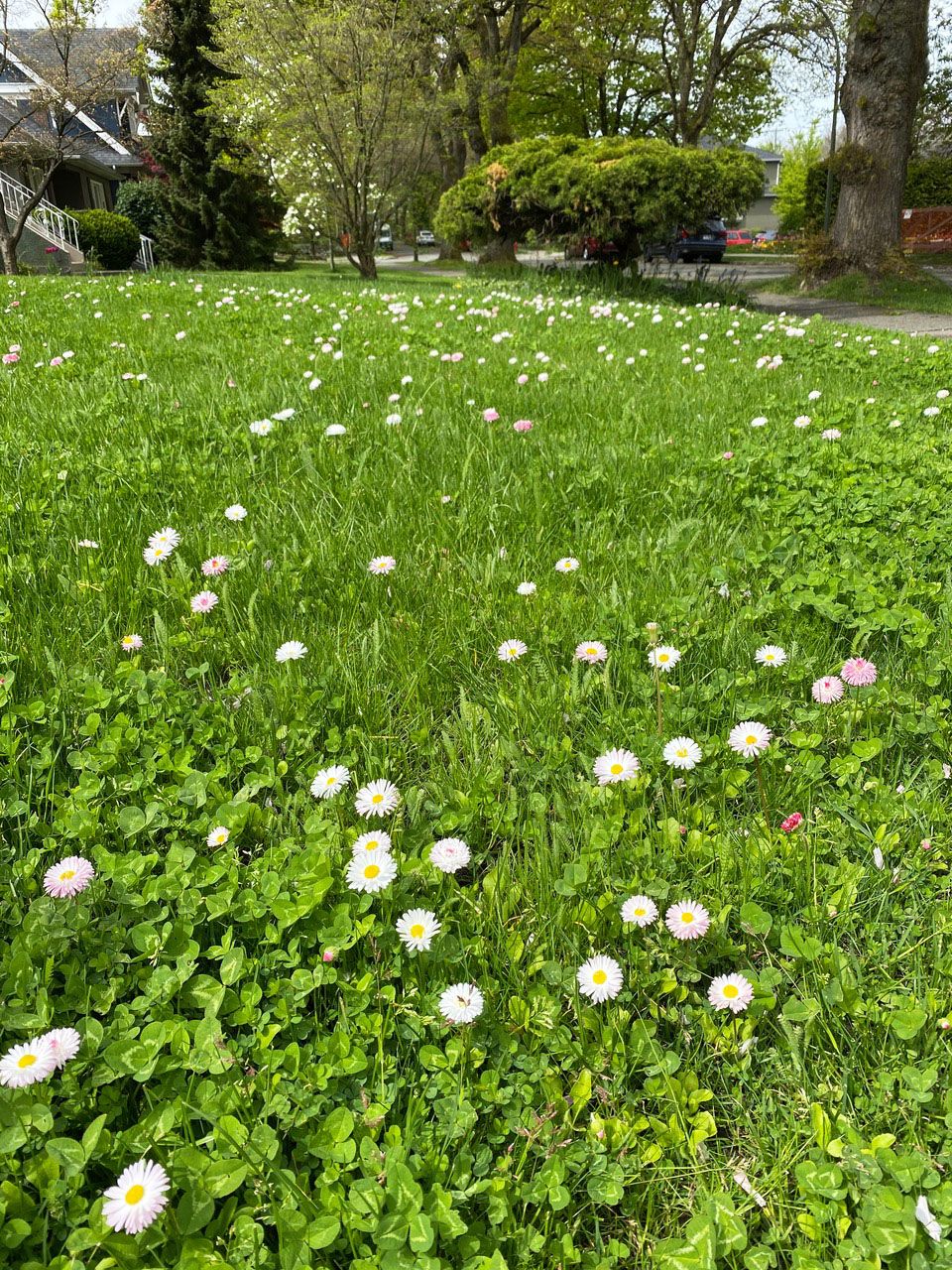
Through some quick research I discovered that West Coast Seeds had two types of bee mix. One is called Bee Turf. I thought, what a great idea. I dug up what was left of the lawn and had a landscaper drop off a huge pile of fresh soil. I laid it out nice and carefully, and I threw down those seeds in March 2020.
Lots of people walked by very curious about what I was doing – had I found a solution to the chafer beetle? I said no, I don't think so. But I explained my story. All of a sudden, after three weeks of praying every day, there was a bit of green fuzz. Then another few weeks later, there was some clover starting to appear. It started to take on a beautiful, kind of lush character. It was unlike the other lawns in the neighbourhood. And finally, after maybe six weeks, my flowers started to come out.
I had so many questions from my neighbours, I put up a sign. We would sit in our living room and look outside at people walking their dogs or just walking by and they would glance at the lawn and look at the sign and smile and take photos. It was really surprising how many people were taken by the idea of a bee meadow.
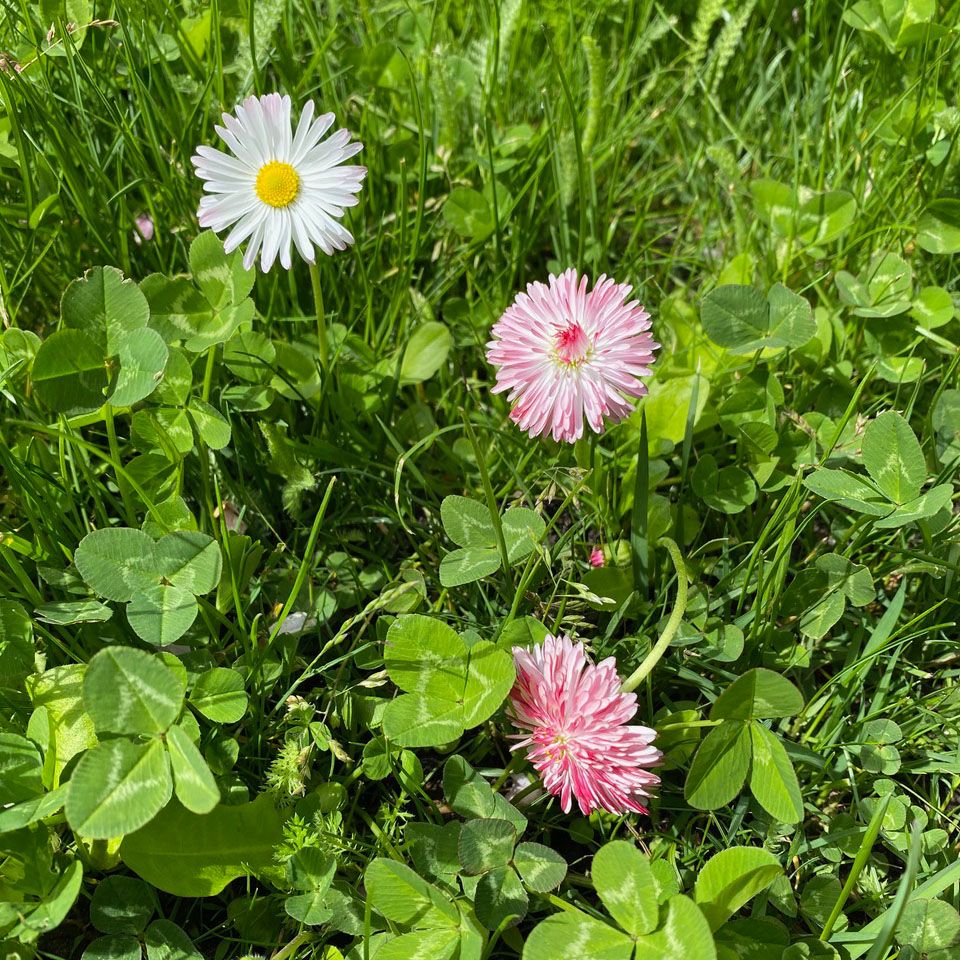
Last year – I'm not a bee expert, but I saw at least five different types of what I call a honeybee. There were wasps, there were three or four different kinds of bumblebees in there. I've never seen such a variety of bees in our neighbourhood, ever. I saw mason bees as well. It was inspiring to see how quickly introducing this meadow made a change.
I did not mow that bee meadow once. And I was curious to see what would happen in the spring. Would it all die down, and would some of it come back? It suddenly sprouted, and started to fill in very quickly.
There are a few places where grass came back. I went in with a pitchfork to pull out that grass, and I was just floored at how healthy that soil was. In the rest of our garden when you put your pitchfork in, sometimes it's very compact or it's full of weeds or it's kind of hard. And when you pull the soil apart, there's very tiny worms or the occasional thin worm. Here, my pitchfork pulled out big, fat, juicy worms. And I could pull out the grass almost by hand because of the porosity of the soil.
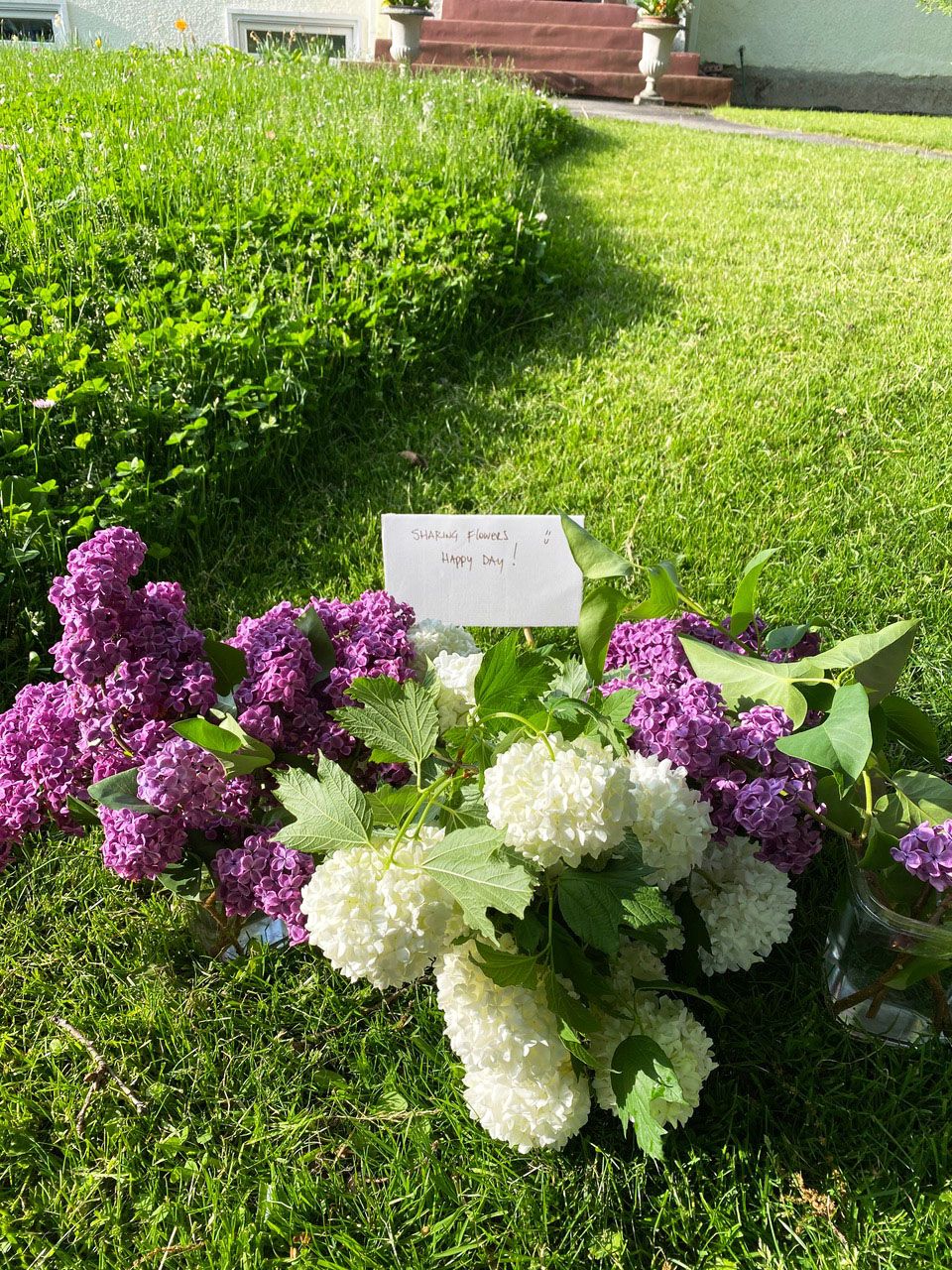
I don't water the meadow at all. It stays moist, even in the dry part of summer. Some of the edges closest to the sidewalk and the pavement tend to dry out. But the moment the rain comes, it recovers. So it's zero maintenance. Zero carbon. I’m not mowing the lawn with a gas lawn mower. And it's kind of a naturally managed landscape. Rewilding is a wonderful term, because really you’re saying, I'm allowing nature to manage this piece of the property. And it seems to be thriving.
"We're not in an age where we should be planting lawns."
I did not want to plant more grass seed and then apply chemicals to preserve the look of the lawn. I felt that this is not the time. We're not in an age where we should be planting lawns. We're in an age where we should be thinking about the bees and the butterflies, and what we can do to make a difference and reduce our carbon footprint. So not having to mow the lawn and not having to water the lawn or apply chemicals should be a driver for more and more people.
Sourcing the seeds in your region is an important aspect. The seeds I sourced are from the West Coast – I felt it was important that the plants belong in this region.
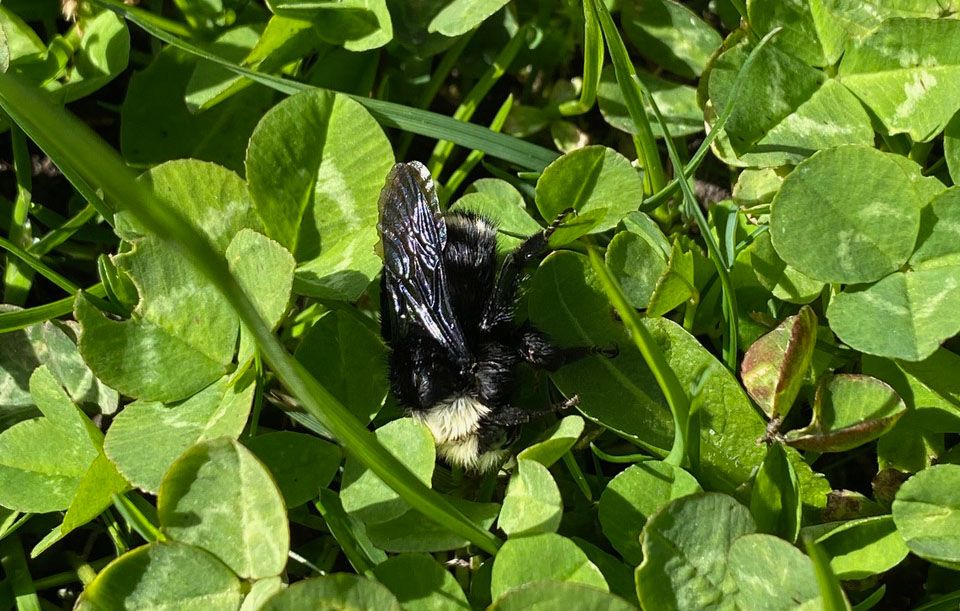
Last summer, I sat down on the path right next to the bee meadow and just watched all the activity: the ants and the birds, the flickers that came to eat the ants and the bees. A wide variety of insects at every level within the meadow. It was fascinating. Here I was on an urban lot in Vancouver.
I really encourage people to do this. It makes me very proud to have done it myself. It was with very minimal effort and very minimal cost. And the reward has been enormous.”



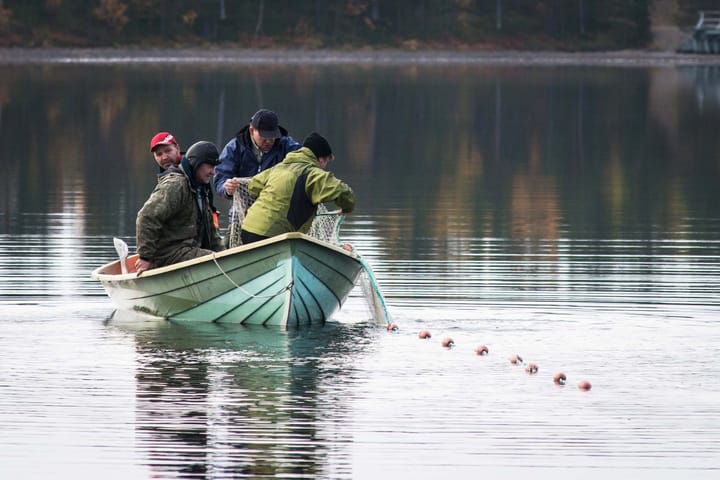


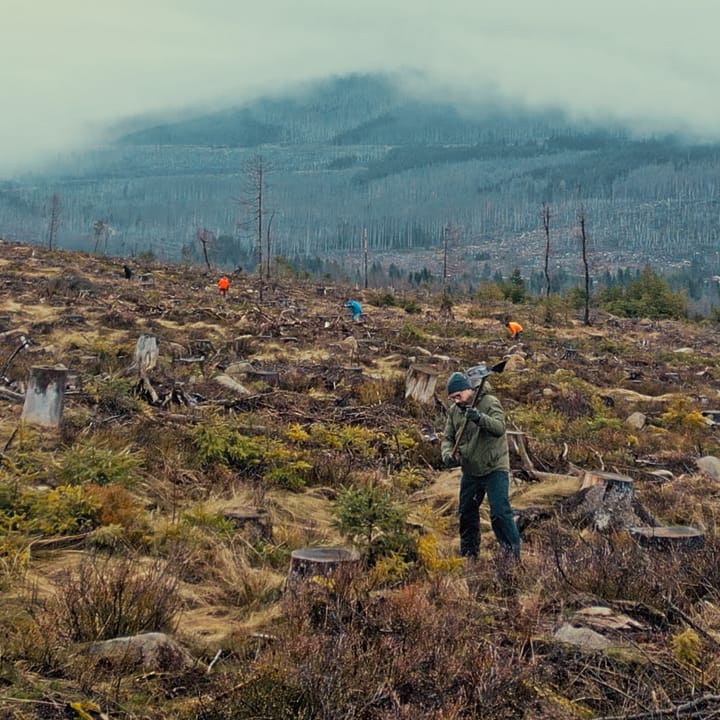
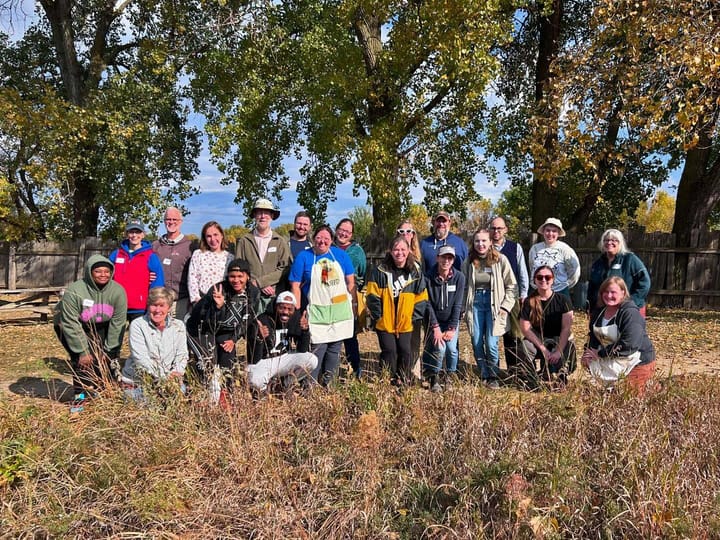

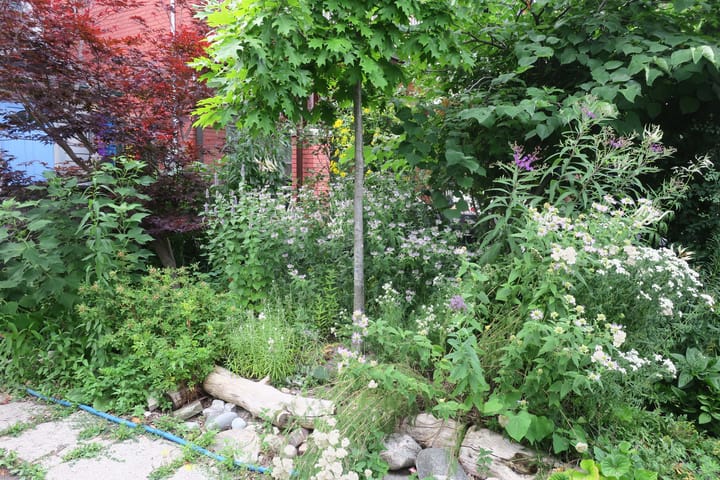

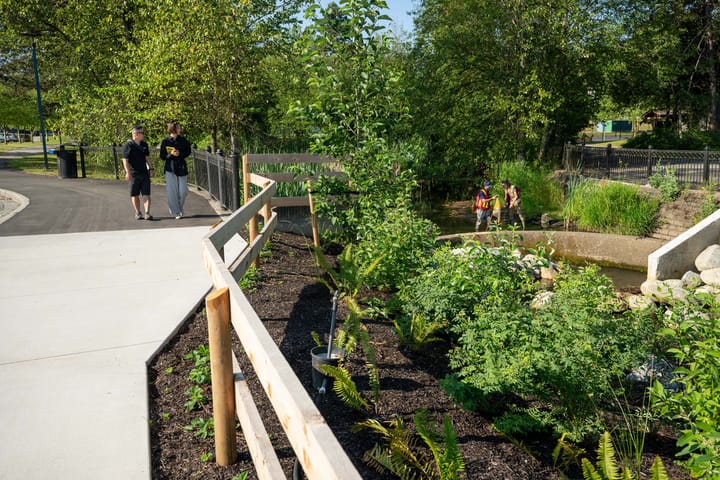
Comments ()